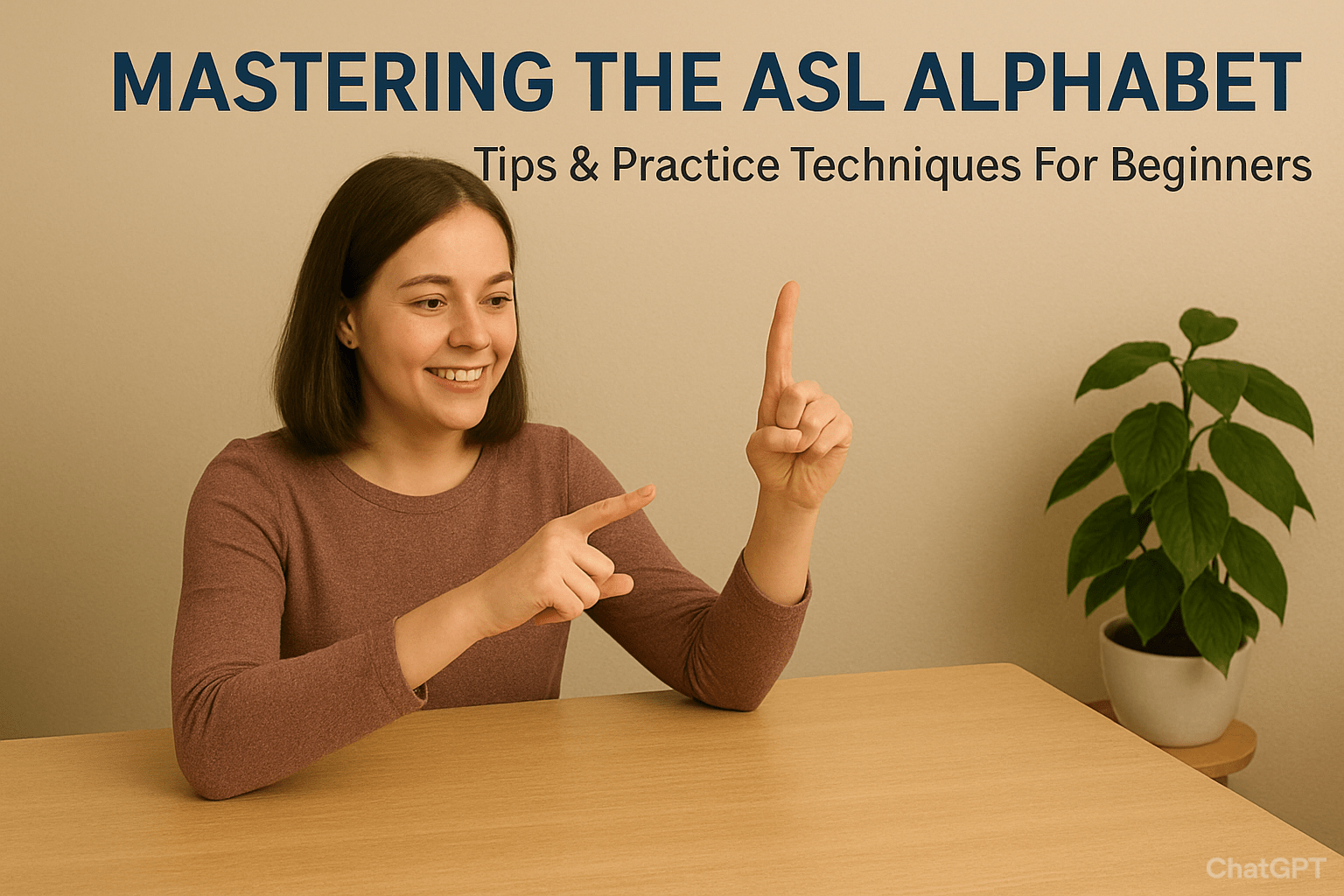If you’ve ever learned sign language, you know there’s a big difference between memorizing signs and signing fluently. True fluency means being able to sign smoothly, naturally, and confidently — without mentally translating every word from your spoken language.
Whether you’re learning American Sign Language (ASL), Indian Sign Language (ISL), or British Sign Language (BSL), the secret to fluency lies in consistent, mindful practice. Let’s explore easy, fun, and effective sign language practice routines to take your signing to the next level.
1. Start with Daily Warm-Ups
Just like vocal warm-ups for singers, signers benefit from hand and finger exercises before diving into practice. Try these:
- Finger Flexes: Gently stretch your fingers, wrists, and arms.
- Alphabet Drills: Rapidly sign the alphabet to improve dexterity.
- Expression Mirror: Practice basic emotions — happy, sad, confused — in the mirror.
This helps loosen your muscles and prepares your face and hands for expressive signing.
2. Mirror Signing for Self-Awareness
One of the most effective sign language practice routines is mirror signing. Stand in front of a mirror and:
- Sign short phrases or stories while watching your facial expressions.
- Compare both hand shapes — are they symmetrical?
- Notice clarity in movement and transitions.
💡 Pro tip: Record short clips of yourself signing and review them weekly. You’ll spot progress (and habits to fix) quickly.
3. Shadowing Native Signers
Just as language learners shadow speakers, you can “shadow” signers.
Watch sign language videos on YouTube, like the ones from SignAcademy.org, and sign along in real-time.
This builds rhythm, flow, and reaction time. Choose topics you love—music, storytelling, or news interpretation—to keep it enjoyable.
4. Create a Signing Journal
Keep a “sign journal” where you record:
- New signs you’ve learned that day.
- Short video entries summarizing your day in sign language.
- Reflections on signs or grammar patterns that confused you.
Over time, this becomes a personal record of your fluency journey — like a video diary of progress.
5. Themed Practice Days
Make each day of the week focus on a specific topic. For example:
- Monday: Emotions and greetings
- Tuesday: Food and dining
- Wednesday: Work or school vocabulary
- Thursday: Daily routines
- Friday: Storytelling or dialogue
This structure prevents overwhelm and ensures you cycle through real-world vocabulary regularly.
6. Join a Sign Language Buddy Circle
Practice with a partner — online or in person. Even a 15-minute chat daily helps you internalize sentence flow. If you don’t know other learners, try joining Deaf community events or online platforms that connect signers.
💬 Remember: Fluency grows through connection, not isolation.
7. Set Realistic Fluency Goals
Instead of vague goals like “I want to be fluent,” aim for specifics:
- Hold a 3-minute signed conversation by the end of the month.
- Tell one story without stopping.
- Learn 10 new signs daily.
Track progress and celebrate milestones — it keeps motivation alive.
8. Review and Reflect Weekly
Once a week, review your recordings and note:
- Which signs you used naturally
- Which ones you hesitated on
- Whether your expressions matched your message
Self-review fosters awareness and prevents fossilizing mistakes.
9. Learn from the Deaf Community
No app or class compares to interacting with native signers. Attending Deaf events, volunteering, or even joining online discussions helps you learn real-life pacing and expressions that textbooks can’t teach. It also builds cultural understanding, which is inseparable from fluency.
10. Combine Practice with Passion
If you love cooking, narrate your recipes in sign language. If you love movies, summarize the plot of your favorite film in signs. By merging signing with things you already enjoy, you’ll practice more — and retain better.
Conclusion: Consistency Beats Perfection
You don’t have to practice for hours. Even 15 focused minutes a day can make a huge difference when done consistently. Fluency in sign language isn’t about signing fast — it’s about signing clearly, expressively, and confidently.
Keep showing up, keep signing, and you’ll soon find your hands and face naturally expressing what your heart wants to say.


